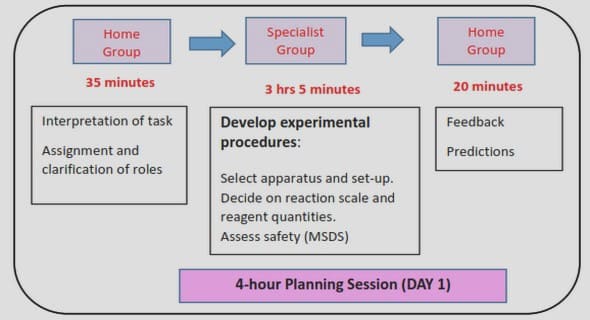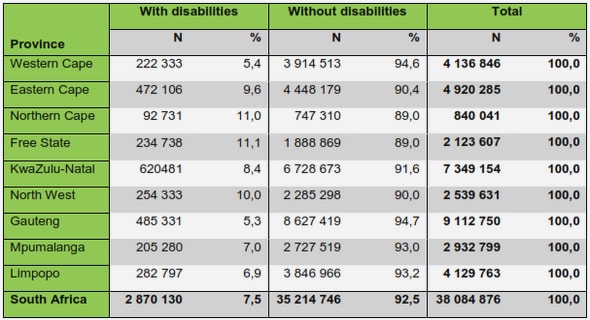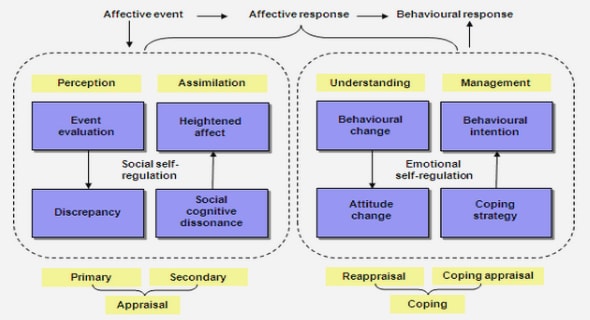Get Complete Project Material File(s) Now! »
CHAPTER 3 THEORETICAL FRAMEWORK, RESEARCH DESIGN AND METHODOLOGY
“There is a tendency to place research design into two categories, namely qualitative and quantitative, but they overlap,” (MDAFLAL 301,2011:17).
INTRODUCTION
The main concerns of this chapter are a discussion of the theoretical framework, research design and methodology. First, the theoretical structure on which the study is based is discussed. The theoretical framework upon which the research is grounded is that of language planning, language policy and the orientations/ideologies therein. Under research design, the format or research plan used is described. The issue of research participants and the sampling procedures used in their selection is discussed next. The chapter proceeds to discuss research instruments and the concomitant issue of their validity and reliability. The procedure through which data will be collected as well as plans for data presentation and analysis will be discussed. Finally, before the chapter closes with a summary of its contents, the issue of ethics and limitations in research will be tackled.
THEORETICAL FRAMEWORK
All research is based on a specific theoretical framework. As this research is steeped in language policy issues it is therefore imperative that the research be based on language planning and policy which is itself based on specific ideological orientations.
The study seeks to lobby the generality of Zimbabweans and their government to seriously consider, adopt and use indigenous languages as media of instruction in the country’s education system. Many scholars have written extensively on this issue. Notable scholars include Ngara (1982), Chiwome and Todhlana (1992), Chimhundu (1998) and Mutasa (2004). However, it is Ngara’s contribution that is pertinent to this study. In his work, Ngara asserts that English, Portuguese, French or any other language of wider communication should work alongside indigenous languages: they should be complementary. Further, he advocates the use of indigenous languages as media of instruction in all primary school grades but Magwa (2009) challenges him and advocates for the use of indigenous African languages at all levels of the education system. The researcher would want to establish if Magwa’s findings apply, and also explore the feasibility of using Shona as a medium of instruction in teaching Science.
Granted, Zimbabwe like a few other African countries, is now putting slightly more emphasis on the use of indigenous languages than during the pre-independence period. Despite the progressive shift in policy, Zimbabwe does not have a clear language policy yet. Language policies come out of language planning while language planning itself is laid on a bedrock of ideology. Ideological orientations are important as language planning is usually influenced by the way language planners view language.
Ruiz (1988: 4) defines ideological orientation as “a complex of dispositions towards language and its role and towards languages and their role in society.” He distinguishes three types of orientations namely
language as problem,
language as right and
language as resource.
Ruiz’s orientations are a new way of describing language planning activities. The approach looks at people’s attitudes towards languages in their communities. How they behave towards those languages and what they think about the languages. People’s attitudes are viewed in relation to the functions of the languages in that particular society. If a language is used in important domains in society then the language us viewed positively and highly. If a language is used in not so prestigious roles in society people are likely to have a negative attitude to it. The issue of attitudes helps one to understand the motivations behind the adoption of specific language policies. Ruiz (Ibid) avers that orientations are basic to language planning because they delimit the ways we talk about language and language issues. Orientations also determine the questions we ask as well as the conclusions we draw from the data.
Language as problem
Those who subscribe to this ideology view language as “… an obstacle standing in the incorporation of members of linguistic minorities into the mainstream” (Madiba, Magwaza and Mulaudzi 1997: 257). This ideology mainly focuses on solving language problems. Haugen (1972: 512) concurs. He says that language planning is called for whenever there are language problems with no program in place to solve them. Those who subscribe to the language as a problem orientation see a connection between the diversity of languages and social problems. They see multilingualism as ultimately leading to lack of social cohesion. The multiplicity of languages can be likened to the Biblical Tower of Babel as the existence of many languages may hinder communication within a society. The multiple languages may be a barrier to national unity, national development and social harmony as the various groups which make up the society may be part of linguistic cleavages which may be antagonistic to each other. The rivalry between Shona and Ndebele speakers in Zimbabwe is a case in point. The height of intolerance is epitomized by the formation of a political party Mthwakazi Liberation Front calling for the secession of Matebeleland from mainland Zimbabwe. Tsonope and Jansen (1991) observe the same. They say political leaders subscribing to this orientation view it as invoking secessionist, ethnic, regionalistic and other sentiments which are retrogressive and disuniting.
Magwa (2009) further observes that the language as problem view tends to suit better those linguists (who) trained in European schools as they see monolingualism as normative and multilingualism as problematic. On the contrary, language planners with an afrocentric view tend to see monolingulism as a problem and multilingualism as advantageous and normative. At the end of the debate questions still remain: what constitutes a language problem? How are the (said) language problems identified? How are the (said) language problems identified? How are the problems ultimately solved? And Are language problems real and not just mirages in the eye of the beholder?
Magwa (opcit) cites two types of language problems, on linguistic and the other non-linguistic. He says linguistic problems are those that are mainly concerned with the structure of language while non-linguistic problems are those found within the social and political framework. The Canadian example cited by Rubin and Shuy (1973: 60) suffices. In the Canadian province of Quebec, the move to replace English with French in work places and official domains was not motivated by linguistic factors but was aimed at redressing unequal access to work opportunities. As such, any attempt to provide solutions to language problems should go beyond the way language is used. A piece-meal approach to providing solutions will not suffice as the two problems are hardly functionally separable.
Language as right
Language as a right implies that all people, be they black, white or coloured, children or adults, are entitled to learn and use their own language in any capacity. At best this implies that every language should be used as a medium of teaching as it is the right of the speakers of that particular language to use it. By implication, all languages should be used, in the print and electronic media thus enabling every individual to access information in their language. Thus practice would be in line with he 1988 United Nations Universal Declaration on Linguistic Rights which states that indigenous people have the right to develop and promote their languages. They also have the right to use their languages for administrative, judicial, cultural and other purposes. Phillipson (1992) concurs and avers that indigenous people’s children have a right to access education in their now languages. Likewise, the 1996 Barcelona Universal Declaration on Linguistic Rights sees languages as the right of an individual emphasizing non-discrimination, pluralism and community initiatives in language use. In short, the language as right ideology recognizes the existence of language rights in any planning. Some examples of language rights will suffice.
The right to participate effectively in government programmes (Ruiz 1984: 22).
The right to use one’s ethnic language in legal proceedings (Mackey 1979: 49).
The right not to be discriminated against on the basis of language. (Macias 1979: 88).
The right to use one’s mother tongues in the activities of communal life and
The right to have one’s mother tongue as medium of instruction in learning (Mackey ibid).
In the language as right orientation, different social groups claim certain rights which should be reflected by language planners. As an example, minority groups in society, fearing, discrimination by majority groups may demand specific linguistic rights. The Tonga people in Zimbabwe are a case in point. At one time, soon after Zimbabwe’s independence they refused to send their children to school because they were not taught in their one Tonga language (Sunday Times 24/07/11). Thus the linguistic rights of minority groups such as their emotions, convictions, beliefs and values can only be fulfilled if they are allowed to use their language.
The full participation of minorities in national activities is guaranteed when their linguistic rights are considered and taken on board. National activities in which they will partake include administrative and judicial proceedings as well as exercising their sovereign rights like taking part in political activities such as voting and campaigning for government posts. Despite all these advantages language as right may however create problems as it may reinforce ethnic tendencies. Individuals may not like to learn other languages other than their own. The Indian example-cited by Roy-Campbell (1994 : 139) in which a constitutional commandment to replace English by Hindi at India’s independence as well as the subsequent three language policy imposed on the people met with much resistance as non-Hindi sections of India resisted learning Hindi as many felt there was no need to learn too many and unnecessary languages.
Language as resource
The orientation stresses the importance to the nation of conserving and developing all of its linguistic resources. Language as resource orientation also sees the promotion of more than one language as valuable. It thus suggests that each individual to be richer cultural knows the richer the individual. This language orientation promotes communication beyond speech communities or linguistic boundaries. The orientation suggests that each language has a role to play and is therefore a complementary. For instance, indigenous languages provide a window to the knowledge and culture of the African community whereas international languages provide a communication. According to this orientation linguistic diversity is a valuable resource rather than a problem (McKay and San Ling Wong 1998). If considered properly, with language as a problem and language as a right orientations for a number of reasons. The language as a resource can
have a direct and positive effect of enhancing the language status of subordinate languages.
help ease tension between majority and minority communities.
highlight the importance of co-operative language planning.
serve as a more consistent way of viewing the role of non-official languages in society.
help to reshape attitudes about language and language groups.
According to the language as resource ideology, languages should be treasured. They should be taken as assets and be treasured like the natural resources. Languages should be preserved in the manner natural resources are preserved. If they are not preserved, languages, like endangered plant and animal species, will get to a point of extinction.
Minority languages are threatened by politics, issues of globalization as well as domination by majority languages and people. In multilingual societies, where the language as a resource orientation is most appropriate, the decision to select a language for national and official use depends on many factors. Those in power usually select languages on the basis of which one gives them the most and best advantages, but the less advantageous languages tend to be neglected and relegated. Language is therefore taken as “a consumer good, the decision to buy will be determined by a cost-benefit analysis” (Ridler and Pons Ridler 1986: 48).
The study’s ideological orientation
Although the three orientations discussed above have great merits each, the ideological disposition adopted in this research is that of language as a right. The researcher feels that it is the child’s right to be taught in a language they are articulate in, conversant with, adequately endowed in and fully understand. Inevitably, it is the use of the child’s mother tongue in education that is advocated for. Scientific evidence suggests that teaching children through their mother tongue affirms their identity and is a good foundation for their intellectual development and (subsequently a country’s ) economic development (Chirinda, 2011: 6).
METHODOLOGY
In this section a clear and concise description of how the study was carried out is given. The research design will be discussed, the research instruments to be used will be explained, details of data collection procedures will be provided and data analysis plans laid out. Details of research participants and sampling procedures are also availed.
Research Design
According to Polit and Hungler (1996) a research design is a structural framework of the study that guides the research in planning and implementing the study while optimal control of factors that could influence the study is achieved. Similarly, Mouton (2001: 55) sees a research design as “a plan or blue print of how the researcher intends conducting the research.” This means that the research design focuses on the kind of study being planned by the researcher and the kind of result aimed at. In short, this study aims at, inter alia, establishing whether Science is a difficult or easy subject, comparing pupils’ performance in Shona and subjects taught in English, establishing the attitudes of primary and secondary school, teachers towards using Shona as a medium of instruction in education, comparing the effectiveness of teaching Science in English and teaching Science in Shona, assessing the policy implementers’ knowledge of policy as well as their efforts towards policy implementation. The place of English in the day to day running of government departments will also be established. From this brief revisit of the study’s aims, it is inevitably clear that the research design will take the form of a descriptive survey and experimental design.
There are two broad categories of research namely quantitative research and qualitative research. Each category uses characteristic research methods. This research is educational and the research methods used in educational research are mainly those used in the behavioural and social Sciences relying most on the disciplines Psychology, Anthropology and Sociology (Best and Kahn 1993). Since research in these three disciplines utilizes experimental and quantitative methods educational research consequently utilizes these methodologies.
I. Quantitative research is research in which the data gathered can be analysed in terms of numbers. It belongs to the paradigm of logical positivism. (Neuman 1997: 106) which is based on the assumption of the natural Sciences. The experiment/inquiry on practical teaching will be steeped in this paradigm. Qualitative research is characterized by the description of events, issues, persons and so forth in a specific manner without the use of numerical data but words. It is based on the phenomenological paradigm. (Neuman op cit) and it uses a variety of interpretive research methodologies. Patton (1990) says qualitative methods consists of three kinds of data collection methods namely
– in-depth open and interviews
– direct observation and
– written documents
In this research a number of methods will be employed and results sought. The methods in the different areas will now be discussed.
Research Methods
In this study four methods will be used. These are the questionnaire, the interview, observation and the experiment.
TABLE OF CONTENTS
DECLARATION
ABSTRACT
DEDICATION
ACKNOWLEDGEMENTS
CHAPTER 1 INTRODUCTION
1.1 Background
1.2 The problem
1.3 Aim of study
1.4 Research questions
1.5 Rationale/justification
1.6 Theoretical framework and language planning policy
1.7 Scope of study
1.8 Conclusion
1.9 Definition of terms
CHAPTER 2 LITERATURE REVIEW
2.1 The role of indigenous languages in Africa’s socio economic development and education
2.2 Attitudes
2.3 Medium of Instruction in education
2.4 Science and Challenges teaching Science
2.5 Conclusion
CHAPTER 3 THEORETICAL FRAMEWORK, RESEARCH DESIGN AND METHODOLOGY
3.1 Introduction
3.2 Theoretical framework
3.3 Methodology
3.4 The role and status of English and Shona in Zimbabwe
3.5 Research subjects and sampling
3.6 Research Instruments
3.7 Gate keeping and Data Collection
3.8 Plans for data presentation and analysis
3.9 Research: Ethics, Limitations and Constraints
3.10 Conclusion
CHAPTER 4 DATA PRESENTATION AND ANALYSIS
4.1 Introduction
4.2 Results on the status of English and Shona in Zimbabwe
4.3 The results of the interviews with Heads of schools and Education Inspectors
4.4 Results from the primary school teachers’ questionnaire
4.5 Practical Teaching Results
4.6 Further Data Analysis
4.7 Conclusion
CHAPTER 5 DISCUSSION
5.1 Introduction
5.2 The status of English and Shona in pre and post independence Zimbabwe
5.3 Attitudes of Zimbabwean people
5.4 Language policy prevailing in government schools and departments
5.5 The role of universities in teaching Science using Shona
5.6 Effectiveness of Shona as a language of instruction in teaching Science in Zimbabwe
5.7 Mother tongue versus English in teaching Science
5.8 The null hypothesis
5.9 General overview of the discussion and possibilities
5.10 Conclusion
CHAPTER 6 CONCLUSION
6.1 Introduction
6.2 Research findings
6.3 Recommendations
REFERENCES
GET THE COMPLETE PROJECT


